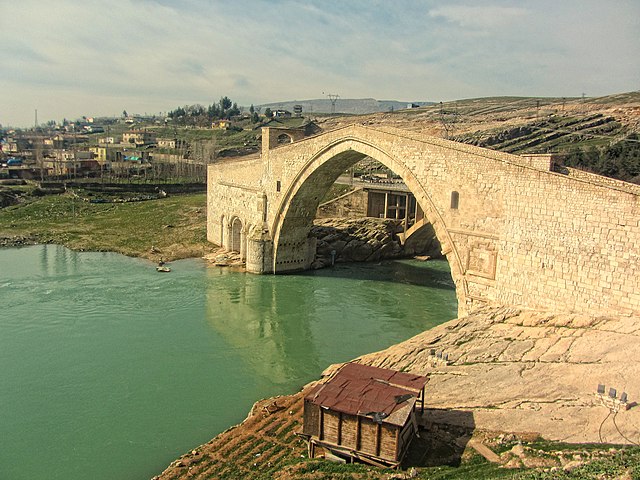The Artuqid dynasty was established in 1102 as an Anatolian Beylik (Principality) of the Seljuk Empire. It formed a Turkoman dynasty rooted in the Oghuz Döğer tribe, and followed the Sunni Muslim faith. It ruled in eastern Anatolia, Northern Syria and Northern Iraq in the eleventh through thirteenth centuries. The Artuqid dynasty took its name from its founder, Artuk Bey, who was of the Döger branch of the Oghuz Turks and ruled one of the Turkmen beyliks of the Seljuk Empire. Artuk's sons and descendants ruled the three branches in the region: Sökmen's descendants ruled the region around Hasankeyf between 1102 and 1231; Ilghazi's branch ruled from Mardin and Mayyafariqin between 1106 and 1186 and Aleppo from 1117–1128; and the Harput line starting in 1112 under the Sökmen branch, and was independent between 1185 and 1233.
City walls of Diyarbakır.
The "Sheikh" of Diyarbakır in Turkic dress, wearing the sharbūsh with tall cap. Painted in Amid, modern-day Diyarbakır, Turkey, ca. 1200–1210, probably Artukid (Maqamat al-Hariri, BNF Arabe 3929).
Malabadi Bridge was built by the Artuqids.
Magic Mirror of Abu-l-Fadl Artuq Shah of Harput, Eastern Anatolia, ca. 1220-30, David Collection. It is "representative of medieval Islamic examples of the “Chinese” type".
Anatolian beyliks were small principalities in Anatolia governed by beys, the first of which were founded at the end of the 11th century. A second and more extensive period of establishment took place as a result of the decline of the Seljuq Sultanate of Rûm in the latter half of the 13th century.
İsa Bey Mosque in Selçuk near İzmir, built by the Beylik of Aydınids in 1375.





